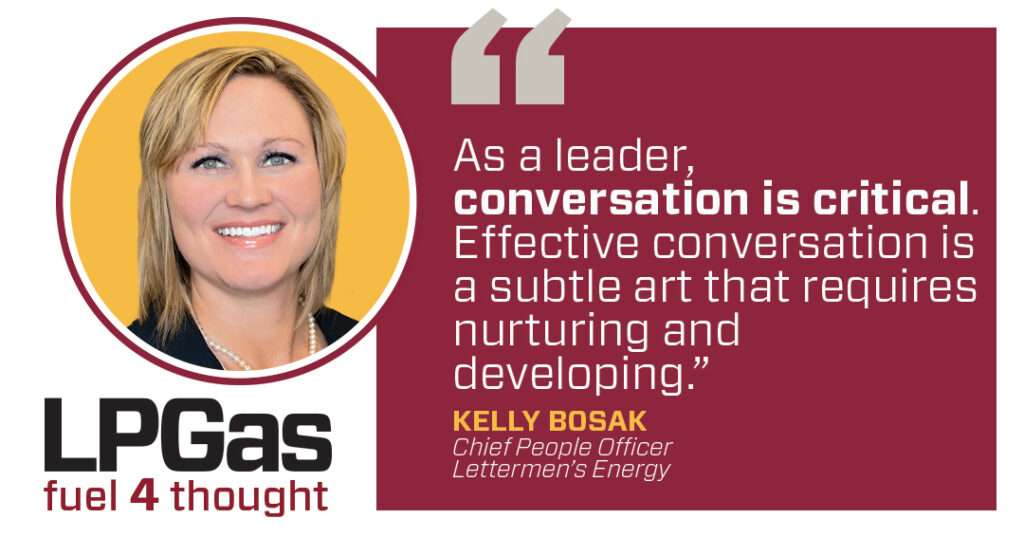Giving effective feedback to your team
In today’s world, leaders are challenged every day with leading employees from remote locations.

There are certain skills and abilities required for a leader to lead effectively and coach team members from a distance. The foundation of success for every distance leader is summed up best by this quote from Lao Tzu, a Taoist philosopher who lived a long time before Zoom meetings were even thought of: “The leader’s role is ultimately to help people learn to lead themselves.”
This article focuses on the important skill of giving feedback in a way that your team will hear your intent and meaning, and then digest it so they can make the appropriate changes or celebrate their successes.
As a leader, conversation is critical. Effective conversation is a subtle art that requires nurturing and developing. The way in which you interact with your employees every day is important. You might not even be aware of the outsized influence you, as a leader, have on your employees’ mental health.
A 2023 study by the Workforce Institute at UKG found that people’s leaders at work impact their mental health just as much as their spouse (both 69 percent) and more than their doctor at 51 percent or therapist at 41 percent.
My suggestion is that the next time you are called to deliver feedback to an employee, try leveraging the “situation-behavior-impact (SBI) feedback model.” This model was developed by the Center for Creative Leadership and has proved to be an effective way to ensure your comments hold meaning for team members. It helps explicitly describe each component of the feedback you’re providing. The SBI framework also removes judgment for the recipient and reduces the anxiety of delivering feedback for you. You can use this method to deliver positive feedback or constructive criticism.
Here’s how it works:
- Situation: Describe the situation in which the behavior occurred. Avoid using generalities such as “last week,” as it can lead to confusion. For instance, instead of saying “last week” or “sometimes,” zero in and say, “last Wednesday morning” or “when you are on customer calls.”
- Behavior: Describe the actual, observable behavior. Keep to the facts. Do not insert opinions or judgments.
- Impact: Describe the behavior’s impact on you, others or the results of the team, project and/or organization. Since you’re describing exactly what happened and explaining your feelings or what your experience has taught you – not passing judgment – the listener is more likely to absorb what you are saying.

Here are examples of giving feedback with and without using the SBI model:
- Feedback without using the SBI model: Lin’s excellent communication skills always satisfy her customers.
- Feedback using the SBI model: When Lin regularly clarifies expectations for the timeline of deliveries or tank sets to her customers and service team, she creates accountability for individual members and encourages them to meet deadlines, which helps ensure customer satisfaction.
- Feedback using the SBI model: This morning, you interrupted me while I was telling Cathy about the change to our collection policy. I felt frustrated when you interrupted me because it broke my train of thought.
- Feedback using the SBI model: Last Thursday during our safety meeting, you took the lead on discussing the importance of our red tag policy, and it made me feel proud of your growth.
After delivering the feedback using the SBI framework, you can explore the disconnect between intent and impact. Ask questions like, “What were you hoping to accomplish with that?” or “What was going on with you?”
In addition to the SBI model, I find these two phrases helpful in delivering feedback in a non-judgmental way:
“I experienced this with you.”
“When you said this, this is how it landed on me.”
After sharing your experience, you can have an open dialogue with the other person without judgment.
It’s long been said that people “join companies and leave managers.”
Probably every single person you know has a story about a bad manager, and I can guarantee you that whoever that manager was, they made their employees much more likely to leave the company. I can also guarantee that they didn’t want to be a bad manager.
Tools like the SBI model can go a long way toward salvaging relationships and ensuring that your employees feel valued and trusted.
Kelly Bosak is the chief people officer at Lettermen’s Energy, where she leads a small but mighty HR team supporting Lettermen’s employees nationwide. Kelly can be contacted at kelly.bosak@lettermensenergy.com or 816-679-1105.
Featured homepage image: pugun-photo/iStock/Getty Images Plus/Getty Images
















